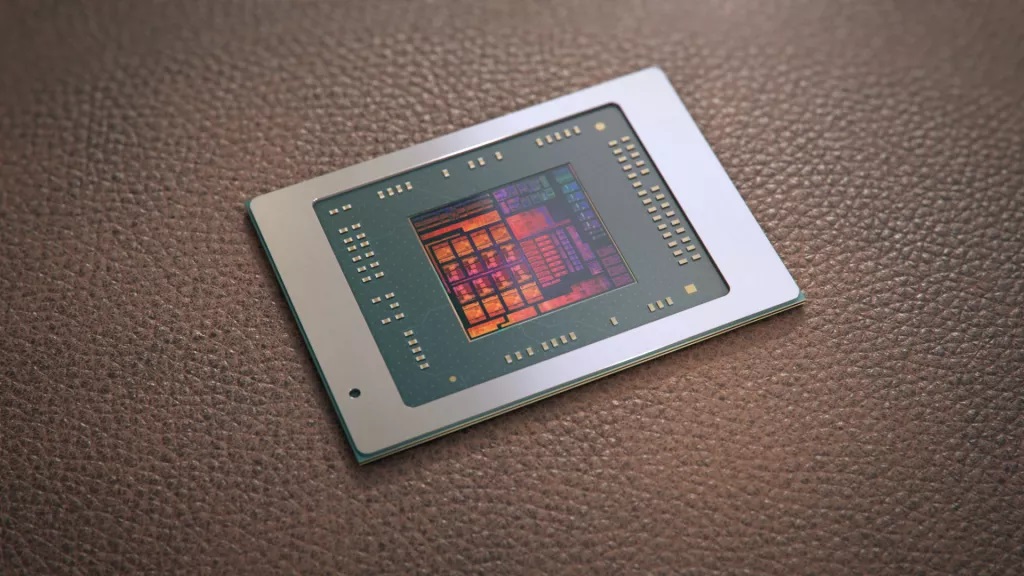AMD's first hybrid CPUs heading for laptops later this year
First outing for AMD's Zen 4c cores will be in a mobile APU.

It looks like AMD will soon be joining Intel in offering hybrid processor designs with more than one type of CPU core. According to Videocardz, images of a smaller variant of AMD's excellent Phoenix APU, as seen in laptops and also handhelds like the Asus ROG Ally, have emerged. The scuttlebutt is that this new "Phoenix 2" chip packs multiple CPU core designs.
Said to be significantly smaller than the existing Phoenix APU at 137mm2, down from 178mm2, Phoenix 2 reportedly drops from 12 graphics CUs to just 4 CUs. That's a pity in terms of gaming performance, but it's the CPU side of the chip where things get interesting.
In the Ryzen 7 7840U and also the Ryzen Z1 Extreme, Phoenix is offered in its full eight-core configuration. That's eight full-fat Zen 4 cores. However, for Phoenix 2, the rumour is that it will come in two flavours, one with two Zen 4 cores and four Zen 4c cores, the other with two Zen 4 cores and two Zen 4c cores.
Those Zen 4c cores are supposed to be smaller and more efficient than full Zen 4 cores. But as we've explained previously, AMD is taking a different approach to Intel with its efficient cores.
Intel's Efficient cores as seen in its Alder Lake and Raptor Lake CPUs are dramatically smaller than its full Performance cores. Roughly, four Intel Efficient cores can be squeezed into the same die space as one Performance core. In short, Intel's Efficient cores are based on a very different architecture. Most obviously, they lack Hyper-Threading and can only process a single thread per core.
By contrast, AMD's Zen 4c cores are about half the size of a full Zen 4 core. In other words, two Zen 4c cores fit in the same die space as a Zen 4 core. Functionally and architecturally, Zen 4c is essentially the same as Zen 4. It has exactly the same front-end, scheduler, execution stage and instruction issue width, the same L1 and L2 cache, the works.
Oh, and includes supporting two threads per core, unlike Intel's Efficient cores, which are single threaded. The difference comes in two areas. Zen 4c's transistor layout has been tweaked for a slightly lower clock speed target and the L3 cache has been cut in half to 2MB per core. Remarkably, that's enough to squeeze two Zen 4c cores into the space of one Zen 4 core.
The biggest gaming news, reviews and hardware deals
Keep up to date with the most important stories and the best deals, as picked by the PC Gamer team.

Steam Deck review: Our verdict on Valve's handheld PC.
Accessories for the Steam Deck: Get decked out
Steam Deck availability: How to get one.
Steam Deck battery life: What's the real battery life of the new device?
Steam Deck - The emulation dream machine: Using Valve's handheld hardware as the ultimate emulator.
For the most part, then, Zen 4c should deliver the same performance per clock as Zen 4. It'll only be scenarios where the L3 cache is being hit hard that Zen 4 will have an advantage. Of course, games are just one such application as Jacob recently explained, which is why AMD's own X3D CPUs with added cache memory such as the Ryzen 7 7800X3D exist.
As for clock speed, the rumours suggest the hit isn't particularly hefty, with the maximum CPU clock dropping from 5.1GHz for Phoenix to 4.9GHz for Phoenix 2. However, it's not clear if that 4.9GHz applies to both core types or perhaps just the full Zen 4 cores.
What's more, it's equally not clear what approach AMD will take with its desktop CPUs when it comes to hybrid core designs. AMD's upcoming Zen 5 CPUs, expected to launch in 2024, were rumoured to make the jump to hybrid cores. However, the latest rumblings indicate Zen 5 will in fact once again contain up to 16 cores based in a single full-performance architecture.
However, given AMD's approach with Zen 4c and the fact that it did a similar thing with slightly cut-down Zen 2 cores in its ultra-low-power Ryzen 7020 series Mendocino processors, as and when AMD does go hybrid on the desktop, we'd expect its efficiency cores to be rather closer in design and performance to its full fat cores than Intel's. Watch this space.

Jeremy has been writing about technology and PCs since the 90nm Netburst era (Google it!) and enjoys nothing more than a serious dissertation on the finer points of monitor input lag and overshoot followed by a forensic examination of advanced lithography. Or maybe he just likes machines that go “ping!” He also has a thing for tennis and cars.

